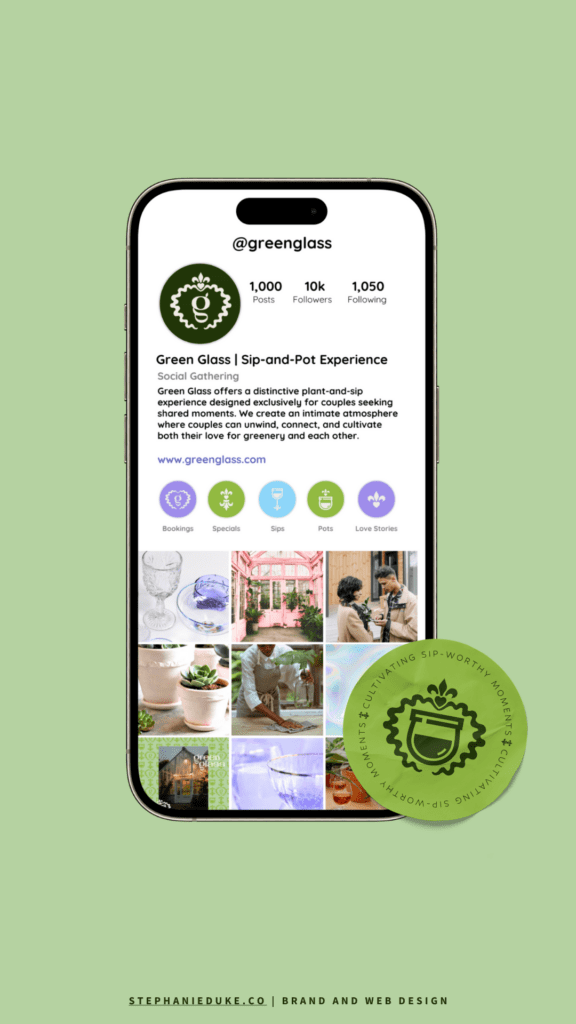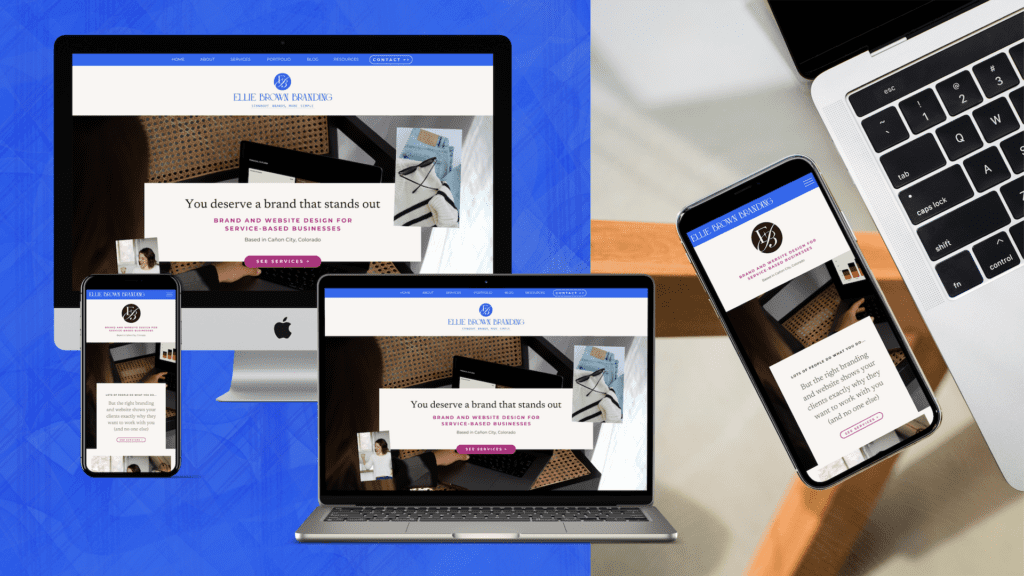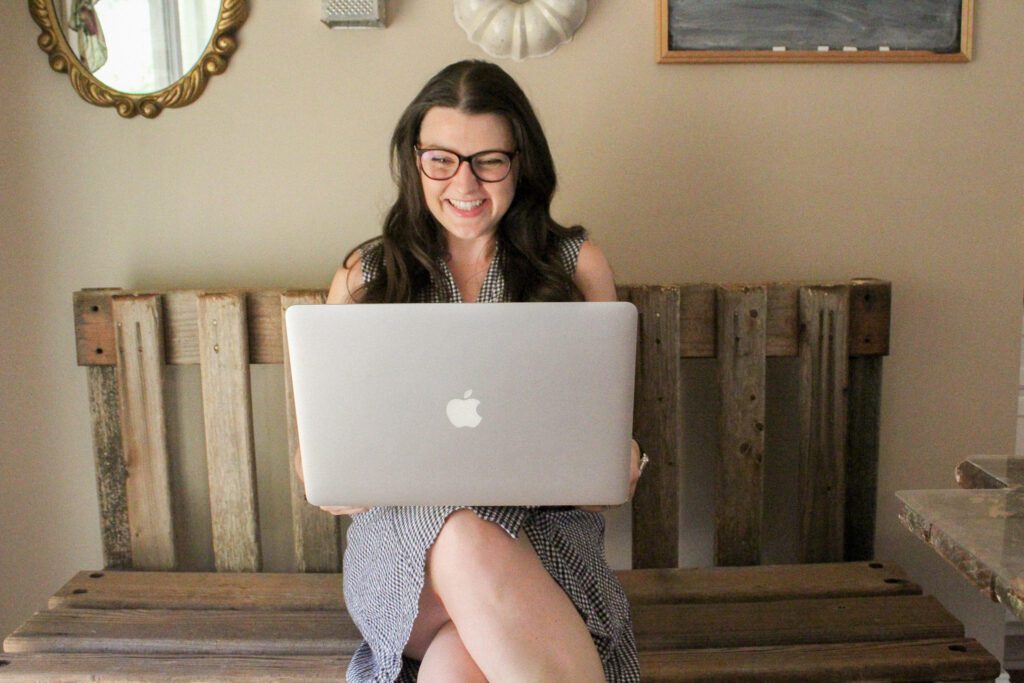Should You Invest in Professional Branding and Web Design?

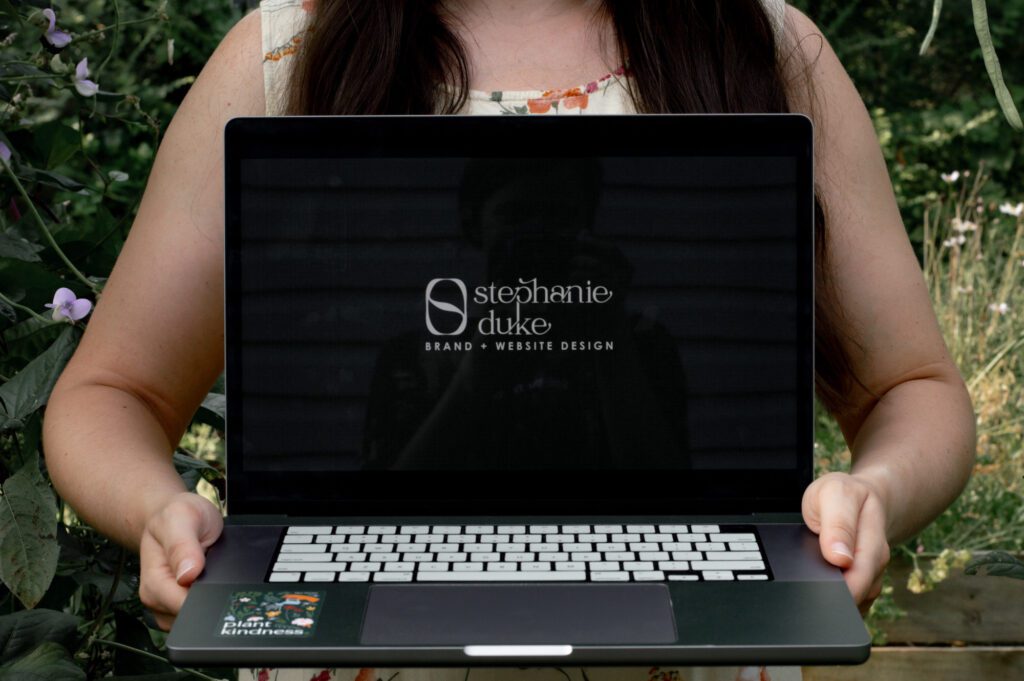
Why Investing in Professional Branding and Web Design Is Worth It
Let’s be real—building a brand and website that actually works for your business isn’t just about looking pretty (though that’s definitely a perk). It’s about making your business feel trustworthy, simplifying your marketing, and making sure potential clients take one look and think, “Yes, I need this!” So if you’ve been DIY-ing your brand and website design and wondering why you’re not getting the results you want, this one’s for you.

While there’s a time and place for DIY, you’ll only get so far before you hit a ceiling—and that ceiling usually shows up in the form of burnout, tech headaches, and branding that doesn’t reflect the quality of what you actually offer.
In this post, I’m breaking down why investing in professional branding and web design is totally worth it—whether you’re running an online service-based business or a local shop (shoutout to my Blount County, Alabama small businesses!). We’re talking everything from the legal stuff you might not even know you need to care about to how professional design can actually boost your bottom line. So grab your coffee (or reheat it for the third time—I get it), and let’s jump in!
Branding: The Foundation of Your Business
Why DIY Branding Is Costing You Clients
Your brand is the first impression potential clients have of your business—whether they find you online or walk into your store. And we all know how important first impressions are. DIY branding might seem like a good idea at first, and honestly, in some cases, it is totally fine. If you’re just getting started and still figuring out what you even want your business to be, DIYing your brand can be a great way to get things off the ground before making a big investment.
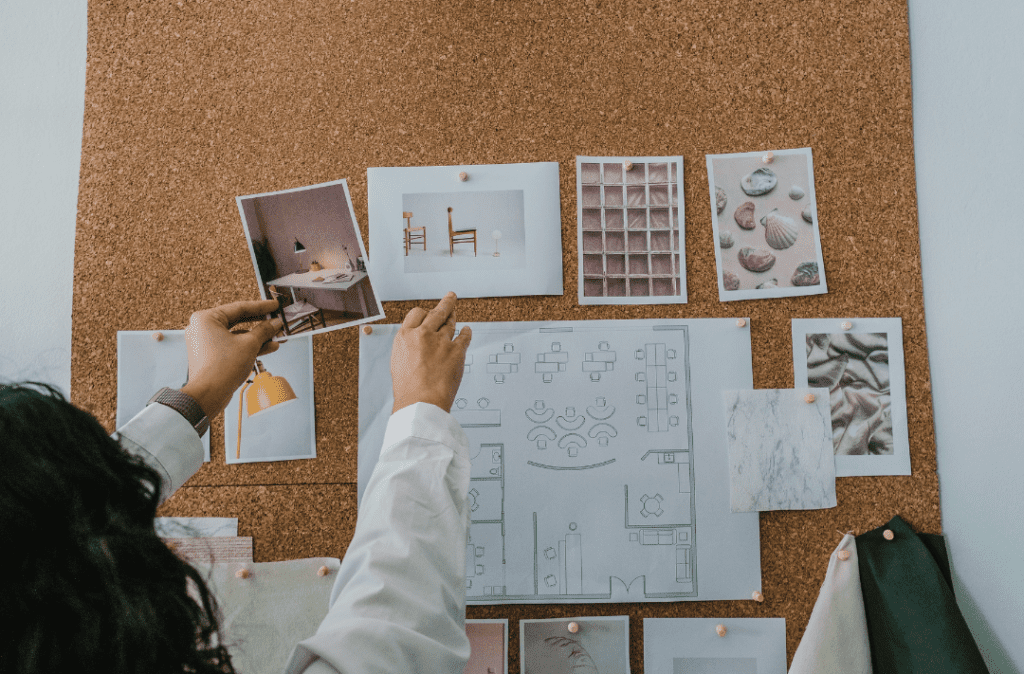
But if you’re opening a brick-and-mortar business—like a restaurant, boutique, or law office—or if you’re an established service provider trying to book higher-paying clients, DIY branding can start to work against you. That’s because, more often than not, it ends up looking inconsistent and a little, well, amateur. Things like mismatched fonts, random colors, busy layouts, and graphics that don’t quite fit make your business seem less credible—even if your services are amazing.
Here’s what that looks like in action:
👉 For Online Providers: Inconsistent branding confuses potential clients and can seriously tank your booking rates. It’s kind of like having a cluttered storefront—people just aren’t going to stick around.
👉 For In-Person Businesses: Unpolished branding can make your shop, restaurant, or office seem less legit. Things like busy signage or hard-to-read menus can deter walk-ins and make it hard for people to remember (or recommend!) your business.
And let’s not forget about time. Every hour you spend trying to figure out Canva is an hour you’re not spending on actual revenue-generating tasks. DIY branding can easily turn into a time-suck that leaves you spinning your wheels instead of making real progress.
If you are DIY-ing your branding for now, here’s my best advice: Keep it simple, stay consistent, and avoid the Canva logo templates at all costs.
Here’s how to DIY your brand identity in Canva (the right way):
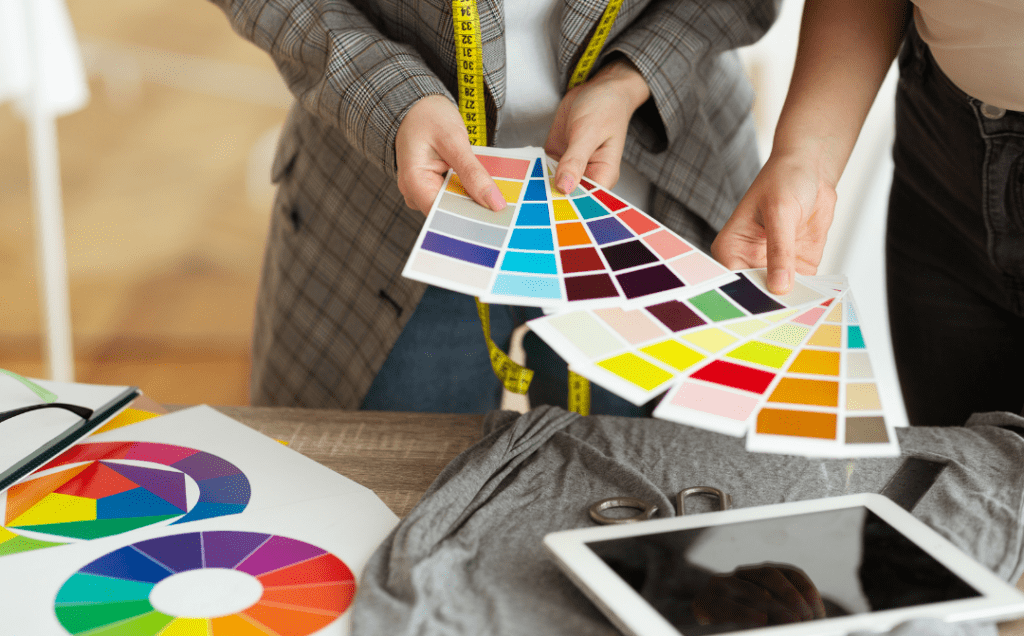
✔️ Create a simple color palette of no more than 2-3 contrasting colors plus black and white.
✔️ Choose 1-2 fonts that you will use consistently across ALL of your marketing (including your website).
✔️ DO NOT use a Canva logo template. Literally millions of people use them, so your logo won’t be unique. Instead, make a simple, font-based logo with just your business name. No icons, no fancy illustrations.
✔️ Save your logo in black, white, and one brand color with a transparent background.
✔️ Stick to your brand elements in ALL of your marketing. Canva social media templates are fine—just make sure you customize them to match your brand.
The key to a professional-looking DIY brand? Consistency. If you’re always changing fonts and colors, your audience won’t recognize (or remember) you.
Eventually, though, your business will outgrow DIY—and when it does, your brand needs to rise with it. That’s where a professional comes in, bringing strategy, experience, and design that actually supports your goals (and your future growth).
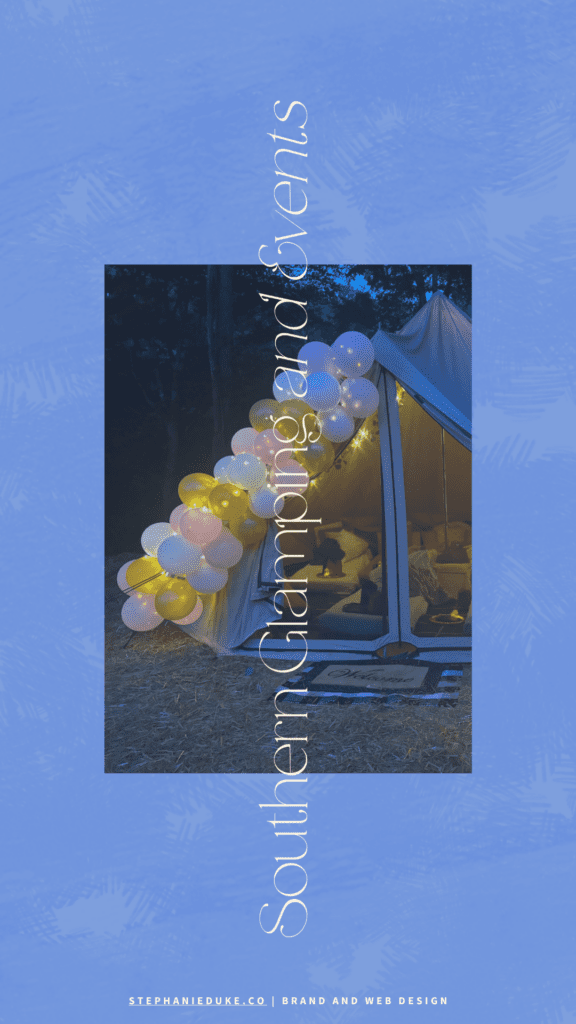
When you’re ready to really elevate your brand and create something that works for you (not against you), it’s time to bring in a professional you trust. Because DIY branding is great for getting started—but polished, strategic branding is what will help your business grow.
Legal Protections: Copyright and Trademark
Let’s talk legal stuff for a sec—because the last thing you want is to wake up to a cease-and-desist letter over a logo you didn’t even realize was already trademarked. 🫠
A lot of DIY business owners unknowingly put themselves at risk by using:
🚨 Logo templates from Canva or Etsy (yes, even the ones that say “customizable”!)
🚨 Unlicensed stock images found on Google (just because you can right-click and save doesn’t mean you should).
🚨 Fonts from random “free download” sites (some of which actually require commercial licenses).

The problem? Just because something is available online doesn’t mean it’s legally free to use. And if you’re out here DIY-ing your brand, it’s surprisingly easy to step into legally murky waters without even realizing it.
How Professional Branding Protects You
✅ A Custom Logo is Legally Yours.
When you invest in a professionally designed logo, you own it. No sneaky fine print, no worrying about whether 15 other businesses have the exact same thing. A designer ensures your logo is one-of-a-kind and, if needed, legally trademarkable.
✅ You Won’t Accidentally Copy Someone Else.
One of the biggest dangers of using a Canva logo template or an Etsy pre-made logo is that hundreds (or even thousands) of other businesses might be using the exact same design. If someone trademarks that logo before you do? You could be forced to rebrand. Ouch.
✅ It’s Harder for Someone to Steal Your Branding.
A professional brand identity makes it easier to protect your work and harder for copycats to steal it. If someone does rip off your branding, having custom design files and proper documentation makes it easier to prove that it’s yours.
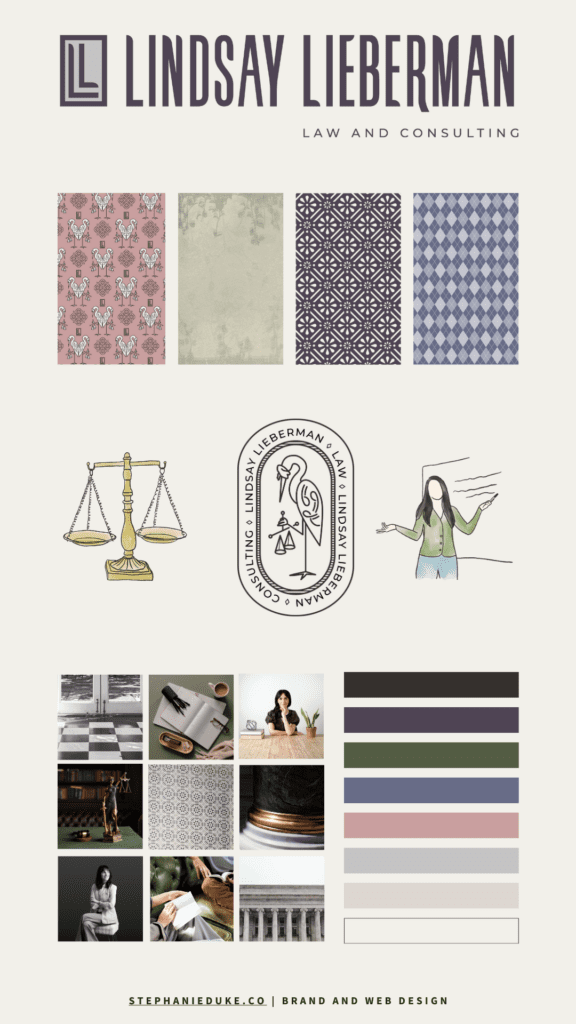
What About Copyright & Trademarking?
A common question I get is, Do I need to trademark my logo?
Copyright is automatic—you own the rights to any original content you create the moment you create it. So, yes, you technically have ownership over your brand assets.
However, trademarking is a separate process that legally protects your logo, name, or slogan on a federal level (which is especially important if you plan to scale or expand your business). If you’re serious about growing, it’s worth consulting with a legal professional to see if trademarking is a smart move for you.
Moral of the Story? Don’t Risk It.
Your brand isn’t just about looking good—it’s about making sure your business is legally protected, too. DIY branding might seem like a quick and cheap solution, but if it means risking a lawsuit, losing your branding overnight, or having to redo everything later on, it’s not really saving you money in the long run.
A professional brand identity doesn’t just set you apart—it keeps you safe from all the legal headaches that can come with DIY shortcuts.
How to Spot a DIY Brand vs. Professional Work
You ever pick up a business flyer and immediately think, Oof, they definitely made this in Microsoft Word? Or drive past a storefront sign where the logo looks… a little off (or even inappropriate 👀)? Yeah. Your potential clients notice those things too.
DIY branding often has a few telltale signs that make it look unpolished and inconsistent, like:
❌ Pixelated logos that were stretched way beyond their intended size. (Probably downloaded from Canva at the wrong resolution or file type.)
❌ Mismatched fonts—one script, one Papyrus, and one that looks like it came straight from a kindergarten classroom.
❌ Generic stock icons that feel impersonal and don’t actually reflect what the business does.
❌ Colors that don’t work together—think neon purple and hot pink in a funeral home’s branding. (Please, no.)
❌ Logo placement that’s all over the place—sometimes on a white background, sometimes on a weird gradient, sometimes with the tagline, sometimes with a different tagline…

And honestly? If your brand still looks like a placeholder while your services are premium-tier… that’s a disconnect your audience can feel. A professional brand bridges the gap between what you do and how you’re perceived.
Professional branding has a level of polish and cohesion that makes your business feel established and trustworthy. It’s intentional, consistent, and recognizable—the kind of thing that makes people take your business seriously.
What Professional Branding Looks Like
✔ Strategic Font Pairings – Every font has a purpose, and they actually complement each other instead of fighting for attention.
✔ Consistent Colors – A well-thought-out palette that reflects your brand’s vibe and is used across everything—from social media to signage to packaging to websites.
✔ Crisp, High-Resolution Logos – Multiple logo variations that are properly formatted for both print and digital use (no blurry, stretched-out disasters here).
✔ Visual Consistency – Everything—your website, marketing materials, and social media—looks like it belongs together. The brand isn’t changing from one place to another.
✔ Strong First Impressions – Whether it’s a business card, an Instagram profile, or a storefront sign, it instantly feels polished and put-together.
It’s the difference between a perfectly styled Target endcap display and a chaotic yard sale where nothing matches.
The kicker? A strong brand makes your business look successful before you even say a word. People feel like they know you and trust you instantly—which is exactly what you want.
Big Brand Strategies for Small Businesses
Spoiler alert, you don’t need Apple’s budget to use their branding strategies. Even the smallest businesses can benefit from some of the tactics that big brands use to build trust and boost sales.
- Consistent messaging: Using the same voice and style across your website, social media, and print materials makes your business feel more legit.
- Color psychology: Those mood-boosting blues and confident blacks aren’t random. They’re designed to make people feel a certain way about your brand.
- Strategic fonts: Yes, your font choices actually matter. A script font might feel playful and personal, while a sans-serif calmly displays modern and trustworthy.
Long-Term Impact of Professional Branding
The best part of having professional branding? You don’t have to update it every six months. Aligned branding attracts higher-paying clients and makes it easier to raise your prices without the awkward “so I’m actually raising my rates” convo.

- Customer loyalty: Consistent branding builds trust, which leads to repeat business.
- Referrals: When your brand looks legit, people are more likely to send their friends your way.
- Confidence: Showing up with a professional brand makes it a whole lot easier to promote your business without feeling cringey.
Website: Your 24/7 Salesperson
Your website is like the employee who never calls in sick, works holidays without complaining, and greets every potential customer with a smile—except, you know, digital. It works around the clock to represent your business, answer questions, and (hopefully!) convert browsers into buyers. But in order to actually do its job, it needs to be built with more than just good looks.
Legal Compliance Matters
Websites come with rules. And ignoring them—whether intentionally or not—can get you into a world of trouble.
If you’re an online service provider…
You need to have clear privacy policies, cookie notices, and GDPR or CCPA compliance if you’re collecting any kind of personal info—think email addresses for your freebie, client info in your contact form, or purchase data from digital product sales. Accessibility matters too—alt text on images, legible fonts, proper contrast, and keyboard navigation aren’t just “nice-to-haves.” They’re part of making your site inclusive, professional, and legally sound.
If you’re a brick-and-mortar business…
ADA compliance is essential. You wouldn’t build a physical space that’s inaccessible to a huge portion of your customers, right? The same goes for your website. On top of that, local SEO is the secret weapon for being discovered by nearby customers. It helps your business show up on Google Maps, in “near me” searches, and right when someone’s looking for what you offer in your area.

And don’t forget industry-specific stuff—like disclosures for financial professionals, health-related disclaimers, or terms of use for any product sales. A professionally designed website will account for all of that.
A designer can help you ensure you’re checking all those boxes while keeping the site looking sharp and feeling seamless. Because nothing kills trust faster than clicking a link and landing on a broken legal page… or worse, not seeing one at all.
Conversion-Focused Design
Your website isn’t just a digital business card—it’s a tool. A really powerful one. And it should be making it ridiculously easy for people to take the next step with you. If someone lands on your site and doesn’t know what to do next? That’s a problem.
Think of your website layout like a GPS. People don’t want to guess where to go or click around five times to find your booking link. They want simple, clear directions.
For online service providers:
You need strategic CTAs (calls-to-action) sprinkled throughout your site like breadcrumbs. Things like:
- “Book a Discovery Call”
- “Inquire About My Services”
- “Download the Freebie”
- “Join the Waitlist”
Each one of these is an invitation for your visitor to take the next step, and they should show up early and often. (No one should have to scroll for five minutes to find your contact button!)
For local, in-person businesses:
CTAs like “Book a Table,” “Order Now,” “Get Directions,” or “See Our Menu” should be front and center. If someone’s on your site from their phone while standing in a parking lot wondering where to eat… don’t make them work for it. Clear CTAs help turn those potential visits into actual foot traffic. Bonus points if your address and hours are super easy to find too.
Good design doesn’t just look good—it guides people. It’s strategic, purposeful, and built to convert visitors into customers without making them overthink it.

And a strategic designer doesn’t just make things look good—they design with intent. Everything from button placement to page flow is built to guide users effortlessly toward taking action (and saying “yes” to what you offer).
SEO Optimization for All Businesses
If your website isn’t showing up on Google, it’s basically just floating out there in the internet void—pretty to look at (if anyone can find it), but not doing a whole lot of heavy lifting. That’s where SEO (search engine optimization) comes in. It’s what helps your site get discovered by real people searching for exactly what you offer.
Good SEO is like putting a big neon sign on the digital highway that says, “Hey! Over here! This is what you’re looking for!”
For online service providers:
Your dream clients are already searching for solutions—you just need your website to show up in those search results. This means:
- Strategic keyword placement (like “branding for photographers” or “copywriting for coaches”)
- Meta descriptions that actually describe what your page is about
- Alt text for images (bonus: it helps with accessibility too)
- A blog that’s consistently updated with helpful, keyword-rich content
Basically, SEO lets your site work for you even when you’re off the clock. It’s your best marketing assistant, working 24/7 without needing coffee breaks.
For local, in-person businesses:
Local SEO is your golden ticket to showing up when someone types “best brunch spot near me” or “pet grooming in [your city].” That means:
- Optimizing your Google Business Profile (complete with reviews, photos, and up-to-date info)
- Using location-specific keywords throughout your website
- Embedding a map and making sure your NAP (name, address, phone number) info is consistent across the web
SEO might feel technical, but it’s really just about making it easy for people to find you. When done right, it brings in organic traffic, boosts credibility, and helps your site turn casual browsers into real, paying customers.
Building Trust Through Your Website
Let’s be honest—people are skeptical. With so many scammy sites and too-good-to-be-true offers floating around online, your website needs to do more than just exist. It needs to build trust the moment someone lands on it.
That means clear messaging, clean design, and proof that you are, in fact, the real deal.
For service providers:
Your website should show people what it’s actually like to work with you.
- Testimonials from past clients (not just the “She’s amazing!” kind—get specific!)
- Case studies that walk through the process and results
- A strong About page that shows your face and tells your story
People want to know that you’re a safe investment. When your website is thoughtfully designed and includes evidence of your work, it makes hitting that “Book Now” button feel like a no-brainer.
For in-person businesses:
Local customers are checking you out online before they ever step foot in your space. Reviews, ratings, and real photos (not just stock images) help them feel confident about giving you their money.
- Link to your Google Business Profile
- Display customer testimonials and user-generated content
- Make sure your contact info, hours, and address are easy to find
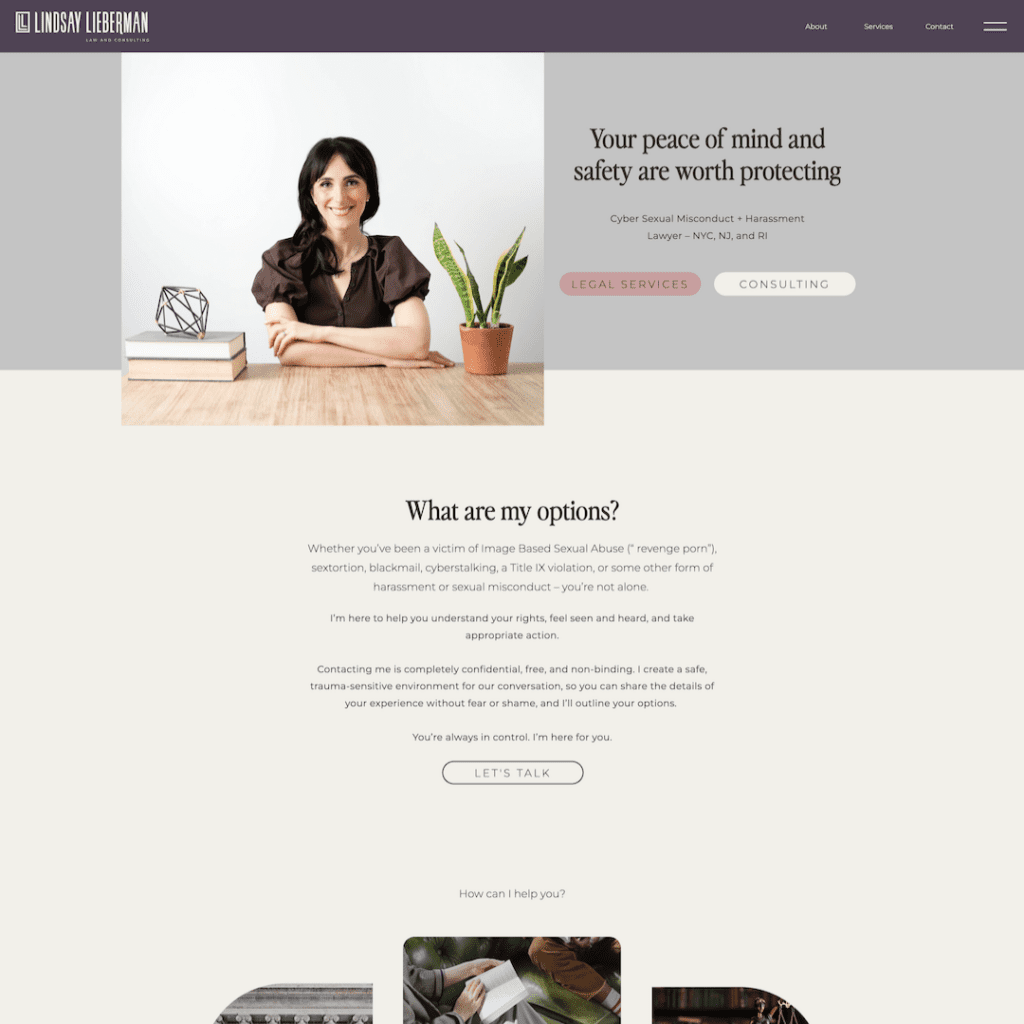
And of course, trust isn’t just about what’s on the site—it’s about how it feels. A slow, clunky, or outdated website erases confidence before a word is even read. But a well-designed, on-brand site? It makes people feel like they’re in the right place.
Avoid Complex Tech Issues
DIY websites might look “fine” at first glance, but under the hood? They’re often held together with digital duct tape. It’s only a matter of time before a plugin update breaks something, or your booking form randomly stops working (right after someone tries to schedule with you, of course 🙃).
Slow load times, broken links, janky mobile layouts—it’s frustrating for you and your visitors. And every second someone spends confused or waiting is a second they’re inching closer to clicking that little “x” in the corner.
A professional website isn’t just pretty—it’s functional. Everything is set up to work with your systems, not against them.
- Your booking software? Seamlessly embedded.
- Your email marketing platform? Fully integrated.
- Your blog? Easy to update without needing a degree in code.
- Mobile view? Clean, polished, and user-friendly.

Plus, a pro can recommend the right tools for your business and avoid the “oops-I-installed-10-plugins-to-do-one-thing” trap. The result? Fewer tech headaches, better user experience, and way more time for you to focus on actually running your business.
Stats About How Website Traffic Affects Your Bottom Line
38% of users will bounce if your layout is unattractive, and 47% expect your site to load in under 2 seconds. Two. Seconds. That’s barely enough time to sip your coffee.
If your site is disorganized, outdated, or takes forever to load, people won’t wait around to see how amazing your services are—they’ll move on to someone else whose site feels easier to trust.
First impressions happen fast online, and your website is often the first interaction someone has with your brand. If your layout is confusing, your buttons don’t work, or your site looks like it hasn’t been touched since 2010… it’s not just a design issue. It’s a conversion issue.
Whether you’re a service provider or a local shop, your website should:
- Load fast (especially on mobile)
- Highlight what you do clearly
- Guide visitors to take action
And listen, this isn’t just for techy online businesses. If you’re running a local bakery, pet spa, or boutique fitness studio, your website is still your first impression for a whole lot of people. They’re Googling you before they ever set foot in your space—and what they see online determines whether or not they’ll show up in person.
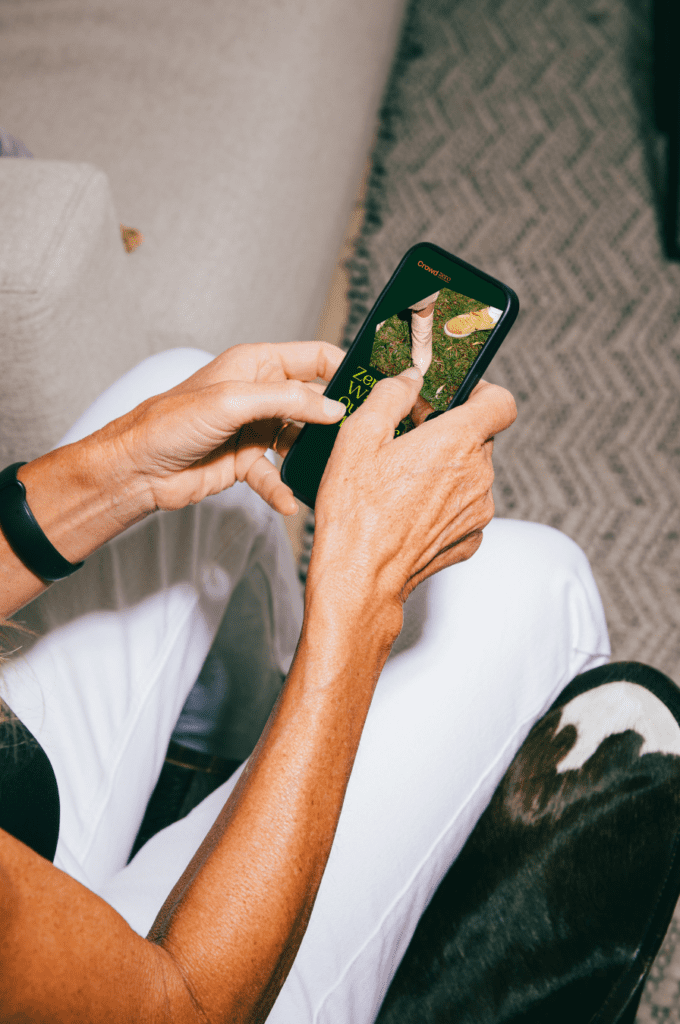
Want even more proof? According to Stanford University research, 75% of users judge a company’s credibility based on its website design alone. That means your website isn’t just a digital brochure—it’s a trust-building tool that can either boost or block your business growth.
So, what’s the verdict?
At the end of the day, investing in professional branding and web design isn’t just about looking polished—it’s about building a business that feels aligned, credible, and confident. Whether you’re an online service provider booking clients through your website or a local business trying to stand out on Main Street, strong visuals and a strategic online presence matter.
When your branding reflects your values and your website actually works for you (instead of being a source of stress), everything gets easier—from showing up online to closing the sale.
So if you’re ready to stop duct-taping your brand together and start building something that actually supports your business goals… I’m here when you’re ready. When you’re ready to upgrade from DIY to done right, I’m just one discovery call away.
I’m Stephanie, but you can call me Steph!
I design brands & websites that get you butterflies-in-your-stomach-excited about your business again.
Simply put, I’m a graphic designer that specializes in brand identity design and Showit website design - arguably the most important aspects of your business! I live in central Alabama with my high school band directing hubby, Thomas, on our modest homestead in the country.
Design that gives you confidence in your brand and time back in your day. Design that gives you confidence in your brand and time back in your day. Design that gives you confidence in your brand and time back in your day. Design that gives you confidence in your brand and time back in your day. Design that gives you confidence in your brand and time back in your day. Design that gives you confidence in your brand and time back in your day. Design that gives you confidence in your brand and time back in your day. Design that gives you confidence in your brand and time back in your day. Design that gives you confidence in your brand and time back in your day. Design that gives you confidence in your brand and time back in your day. Design that gives you confidence in your brand and time back in your day. Design that gives you confidence in your brand and time back in your day. Design that gives you confidence in your brand and time back in your day. Design that gives you confidence in your brand and time back in your day.
your guide to a stress-free website
FREE Website Planning Tool
- My exact Website Copy Planner Google Doc
- A master doc for keeping track of links and embed codes
- Loads of tips and tricks for planning website content (copy, photos, branding, etc) with ease
